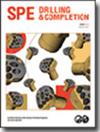Applications of Machine Learning Methods to Predict Hole Cleaning in Horizontal and Highly Deviated Wells
IF 1.2
4区 工程技术
Q3 ENGINEERING, PETROLEUM
引用次数: 1
Abstract
Summary Machine learning (ML) has become a robust method for modeling field operations based on measurements. For example, wellbore cleanout is a critical operation that needs to be optimized to enhance the removal of solids to reduce problems associated with poor hole cleaning. However, as wellbore geometry becomes more complicated, predicting the cleaning performance of fluids becomes more challenging. As a result, optimization is often difficult. Therefore, this research focuses on developing a data-driven model for predicting hole cleaning in deviated wells to optimize drilling performance. More than 500 flow loop measurements from eight studies are used to formulate a suitable ML model to forecast hole cleanout in directional wells. Measurements were obtained from hole-cleaning experiments that were conducted using different loop configurations. Experiments ranged in test-section length from 22 to 100 ft, in hole diameter from 4 to 8 in., and in pipe diameter from 2 to 4.5 in. The experiments provided measured equilibrium bed height at a specific flow rate for various fluids, including water-based and synthetic-based fluids and fluids containing fibers. Several relevant test parameters, including fluid and cutting properties, well inclination, and drillstring rotation speed (drillpipe rev/min), were also considered in the analysis. The collected data have been analyzed using the Cross-Industry Standard Process for Data Mining. This paper is unique because it systematically evaluates various ML models for their ability to describe hole cleanout processes. Six different ML techniques: boosted decision tree (BDT), random forest (RF), linear regression, multivariate adaptive regression spline (MARS), neural networks, and support vector machine (SVM) have been evaluated to select the most appropriate method for predicting bed thickness in a wellbore. Also, we compared the predictions of the selected ML method with those of a mechanistic model for cases without drillstring rotation. Finally, using the ML model, a parametric study has been conducted to examine the impact of various parameters on the cleanout performance of selected fluids. The results show the relative influence of different variables on the prediction of cuttings bed. Accordingly, flow rate, drillpipe rev/min, and fluid behavior index have a strong impact on dimensionless bed thickness, while other parameters such as fluid consistency index, solids density and diameter, fiber concentration, and well inclination angle have a moderate effect. The BDT algorithm has provided the most accurate prediction with an R2 of 92%, a root-mean-square error (RMSE) of 0.06, and a mean absolute error (MAE) of roughly 0.05. A comparison between a mechanistic model and the selected ML technique shows that the ML model provided better predictions.机器学习方法在水平井和大斜度井井眼清洁预测中的应用
机器学习(ML)已经成为基于测量的现场操作建模的一种强大方法。例如,井筒清洗是一项关键的作业,需要对其进行优化,以提高固体的清除能力,减少与井筒清洁不良相关的问题。然而,随着井筒几何形状变得越来越复杂,预测流体的清洁性能变得越来越具有挑战性。因此,优化通常是困难的。因此,本研究的重点是开发一种数据驱动模型,用于预测斜度井的井眼清洁情况,以优化钻井性能。来自8项研究的500多个流动环测量数据用于制定合适的ML模型,以预测定向井的井眼清洗。测量结果来自使用不同回路配置进行的孔清洗实验。测试段长度从22英尺到100英尺不等,井眼直径从4英寸到8英寸不等。,管径为2 ~ 4.5 in。实验提供了不同流体在特定流速下的平衡床层高度,包括水基、合成基流体和含纤维流体。在分析中还考虑了一些相关的测试参数,包括流体和切削性能、井斜和钻柱旋转速度(钻杆转速/分钟)。使用跨行业数据挖掘标准流程对收集到的数据进行分析。这篇论文是独一无二的,因为它系统地评估了各种ML模型描述孔清洗过程的能力。六种不同的机器学习技术:增强决策树(BDT)、随机森林(RF)、线性回归、多元自适应回归样条(MARS)、神经网络和支持向量机(SVM)进行了评估,以选择最合适的方法来预测井筒层厚。此外,我们还将所选ML方法的预测结果与没有钻柱旋转情况下的机械模型的预测结果进行了比较。最后,使用ML模型进行了参数研究,以检查各种参数对选定流体清洗性能的影响。结果显示了不同变量对岩屑床预测的相对影响。因此,流量、钻杆转速/分钟、流体行为指标对无量纲床层厚度的影响较大,而流体稠度指标、固体密度和直径、纤维浓度、井斜等参数对无量纲床层厚度的影响较小。BDT算法提供了最准确的预测,R2为92%,均方根误差(RMSE)为0.06,平均绝对误差(MAE)约为0.05。机械模型与所选机器学习技术之间的比较表明,机器学习模型提供了更好的预测。
本文章由计算机程序翻译,如有差异,请以英文原文为准。
求助全文
约1分钟内获得全文
求助全文
来源期刊

SPE Drilling & Completion
工程技术-工程:石油
CiteScore
4.20
自引率
7.10%
发文量
29
审稿时长
6-12 weeks
期刊介绍:
Covers horizontal and directional drilling, drilling fluids, bit technology, sand control, perforating, cementing, well control, completions and drilling operations.
 求助内容:
求助内容: 应助结果提醒方式:
应助结果提醒方式:


